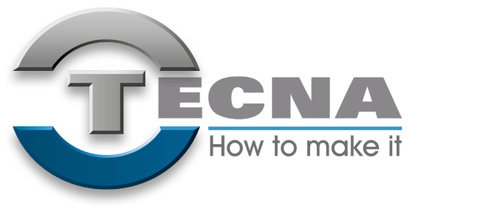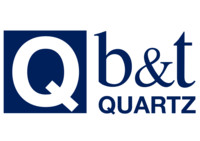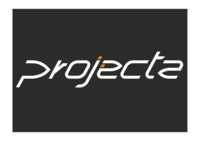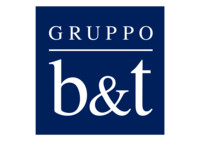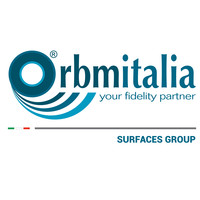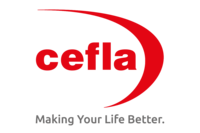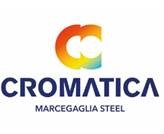Decortech 2024 protagonists
Discover the complete interviews of:
Fabio Vito Grazioso - Responsabile Commerciale per Linee di Stampa Digitale Cefla s.c. - Business Unit Finishing
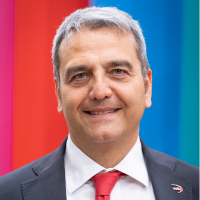
1. Can you briefly introduce the company?
Part of Cefla s.c. with HQ in Imola and branches located worldwide, Cefla Finishing is the Business Unit that specialises in surface finishing technologies, manufacturing coating equipment, industrial digital printers, and machines for decoration and lamination. All are designed as turnkey solutions for the embellishment of wood, glass, plastics, ceramics, fibre cement, composite materials and metal. Expertise acquired over the years and consolidated know-how in areas such as the construction, furniture, packaging, aerospace and automotive industries at a global level have made this group a frontline player. Cefla Finishing boasts 300 different solutions, 9,000 active customers, 14,000 lines installed and 430 active patents.
2. What will you present at Decortech?
Based on our broad experience of finishing technologies, including the fast-evolving industrial digital printing techniques, we will provide a close look at how this technology can be applied to inert materials and substrates, bring along some interesting samples and examples.
One key aspect we always emphasise is that a customer who is new to this technology needs all the support we can provide from early on until their line is running. We help companies understand the potential of digital printing, what steps must be taken to benefit from such a versatile solution, how to optimise the investment, how it will affect business and how to stay on target for their ultimate goals.
Our speech will deal with substrate characteristics, product performance, customisation opportunities, as well as the look, feel and surface resistance that can be achieved.
Special attention will be placed on the integrated process of substrate preparation, digital print files, and the additional finishing techniques that are implemented to complete the surface finishing process.
3. How do you see the technological cross-pollination between various surface sectors?
In recent years, technological cross-contamination between various surface-related sectors has become increasingly significant. While every surface has its own unique characteristics, continuous research and innovation nevertheless mean we are witnessing ever-more frequent interaction between different materials and their applications. For example, in the furniture industry there is - in addition to wood and its derivatives - growing integration of plastic, glass, metal and stone. It should, however, be noted that, in order to be treated properly, different surfaces require specific technologies and skills.
From our perspective, such contamination is hardly new: it’s simply the way the industry evolves. We have a long history of working closely with customers and examining how we can merge all our skills in the different finishing technologies to create optimal solutions. This integration allows us to provide products that deliver not just the required performance and efficiency but also high quality and sustainability. From substrates to chemicals, research into materials plays a crucial role as an enabler of these new surfaces, allowing different technologies to converge and create added value across multiple industries.
Alberto Ghisellini – Country Manager KERAjet Italia
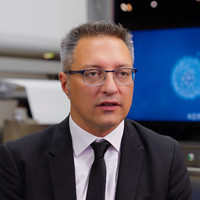
1. Can you briefly introduce the company?
Since it was founded back in 1998, KERAjet has never stopped evolving. Renowned as a pioneer in the field of digital printing, the company remains in close contact with its international customers across numerous industries, giving it rapid and precise knowledge of their surface decoration needs.
With over 25 years of experience, KERAjet has established itself as a benchmark in the ceramic sector and beyond. Its commitment to innovation and excellence prompts it to design and develop hi-tech products, all of which are manufactured entirely in Spain, and places it at the forefront of advances in industrial digital decoration processes.
KERAjet’s ongoing commitment to research, development and innovation, bolstered by its extensive knowledge and experience, enables the company to offer comprehensive technological solutions that drive progress across the diverse sectors it serves as part of its path toward diversification (ceramics, textiles, glass, tableware, plastics, metals, cement, etc.).
KERAjet currently has over 4,000 production units installed and operating worldwide. This achievement is a testament to the dedication, hard work and continuous improvement efforts of its young and highly qualified team, solidifying the company’s leadership in the digital technology sector.
2. What will you present at Decortech?
KERAjet will be presenting a range of industrial inkjet printing solutions suitable for textiles, metal sheets, aluminium and PVC profiles, glass, and of course ceramics (full digital glazing), heavy clay and tableware.
3. How do you see the technological cross-pollination between various surface sectors?
One of the main advantages of inkjet printing systems is their exceptional flexibility in terms of both graphic design and the production process. This versatility enables users to explore more adventurous designs, opening up opportunities for a complete graphic reinterpretation of various printable surfaces. It also allows for full customisation, including the creation of unique designs that are specifically tailored to meet the individual needs of each end customer.
Massimo Colombo, Sales Manager di Metis Systems

1. Can you briefly introduce the company?
METIS designs and produces high quality and resolution scanners (Color+3D) for the reproduction of large surfaces and materials aimed to the decorative market. METIS scanners combine high precision mechanics and optics together with a powerful software, which works in perfect harmony providing a fully automated and extremely fast workflow that, at the same time, is complemented with all the necessary tools to optimize the production processes. METIS will present the latest innovations, including new features for the export of PBR maps aimed to marketing applications of the decorative products (rendering for brochures, videos and commercial sites).
2. What will you present at Decortech?
Metis will present videos related to the latest technological innovations and new production workflows that our systems can support. In particular, we will focus on the PBR (physically based rendering) workflow for virtual applications with 3D texture rendering.
3. How do you see the technological cross-pollination between various surface sectors?
We have noticed that among our clients in various industries, there is a strong cross-pollination in technology and design. The most striking examples are in the ceramic industry and decorative laminates, where it is increasingly common to see wood graphics on tiles and, conversely, marble graphics on laminated surfaces.

